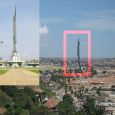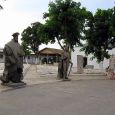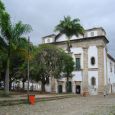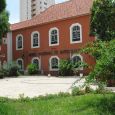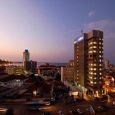Luanda
Advertisement
By plane
Despite the city's very low tourist number, it has a surprisingly large number of international connections, which largely service Angolans living abroad (such as Brazil) and the growing number of firms servicing the oil and diamond industries as well as reconstruction (done largely by Chinese workers and Brazilian firms). A couple carriers still operate routes based on Cold War alliances (to Havana & Moscow).
By train
There are a few short passenger lines, but they are not very safe. Angola once had the most extensive rail network in Africa while under colonial rule. All but a couple short link fell into grave disrepair during the war for independence and civil war. It is currently undergoing extensive reconstruction and modernization by Chinese firms and should be restored to its former glory in the early 2010s
By boat
As of 2007, there was a ferry operating from Luanda to the Cabinda exclave, useful to avoid a transit of the DRC. It takes 14 hours and costs $180 (including a bike), so you may be better off flying.
By bus
The National Bus Service has just re-opened but routes are not organized yet. There are some local services in Luanda and in between cities.
By car
The main road for tourists will be the coastal highway leading north to the DRC and South to Namibia. It is very scenic and in reasonably good repair. Roads are one of the top priorities in reconstruction efforts, including a handful of six-lane highways leading out of the city. Expect a mix of okay pavement on old highways and a smooth ride on new roads.
Advertisement
Augostinho Neto Mausoleum
Upon arrival in Luanda, it is impossible to miss the towering obelisk-like structure shooting above the rest of the city. If you're curious to know what it is and why it is there, it's a mausoleum dedicated to Augustinho Neto, the first President of Angola who helped in Angola's struggle for independence
Fortaleza de Sao Miguel
Built in 1576, it became the administrative center of Luanda during the early part of colonial rule and was a self-contained city for the early military garrison and an important holding place for slaves. It contains ornate wall tiles detailing the history of the city along with many relics, such as cannons and the original holding cells for slave
National Museum of Slavery (Museu Nacional da Escravatura)
Built in the area where the slaves were held prior to being taken off to the Americas, most of them to Brazil. The museum features many photos of the slaves and Luanda during the days of slavery. The museum building is the Capa de Casa Grande, which is where they baptized slaves prior to sending them off to the Americas.
National Museum of Natural History
A museum filled with thousands of species of animals, including fish, birds, crustaceons, and insects. Many of the displayed animals are endangered, and some are even extinct. The museum does an impecable job of displaying the large amount of diverse organisms that inhabit and once inhabited this nation.
National Museum of Anthropology
Dedicated to educating people about Angolan history and culture, the National Museum of Anthropology features an impressive array of traditional masks along with art, sculptures, tools, weaponry, jewelry, clothing, and musical instruments. Free.
Fortaleza de Sao Pedro da Barra
A fortress that served a variety of purposes throughout its history. It was originally constructed in the 17th century to protect the area from invaders. When the slave trade began, it was then used as a keep for the slaves until they were ready to send them away. Throughout Angola's struggle for independence against Portugal from 1961-1975, the fort housed nationalists who were arrested and then forced into labor camps.
Igreja Nossa Senhora do Pópulo (Igreja da Se)
Considered to be the first Anglican Church, it is one of Luanda's most treasured cultural and historical sites. The current structure dates back to 1482. Aside from its religious significance, the unique Baroque architecture and the lavish interior attract many visitors
Information not available
Information not available
Advertisement

